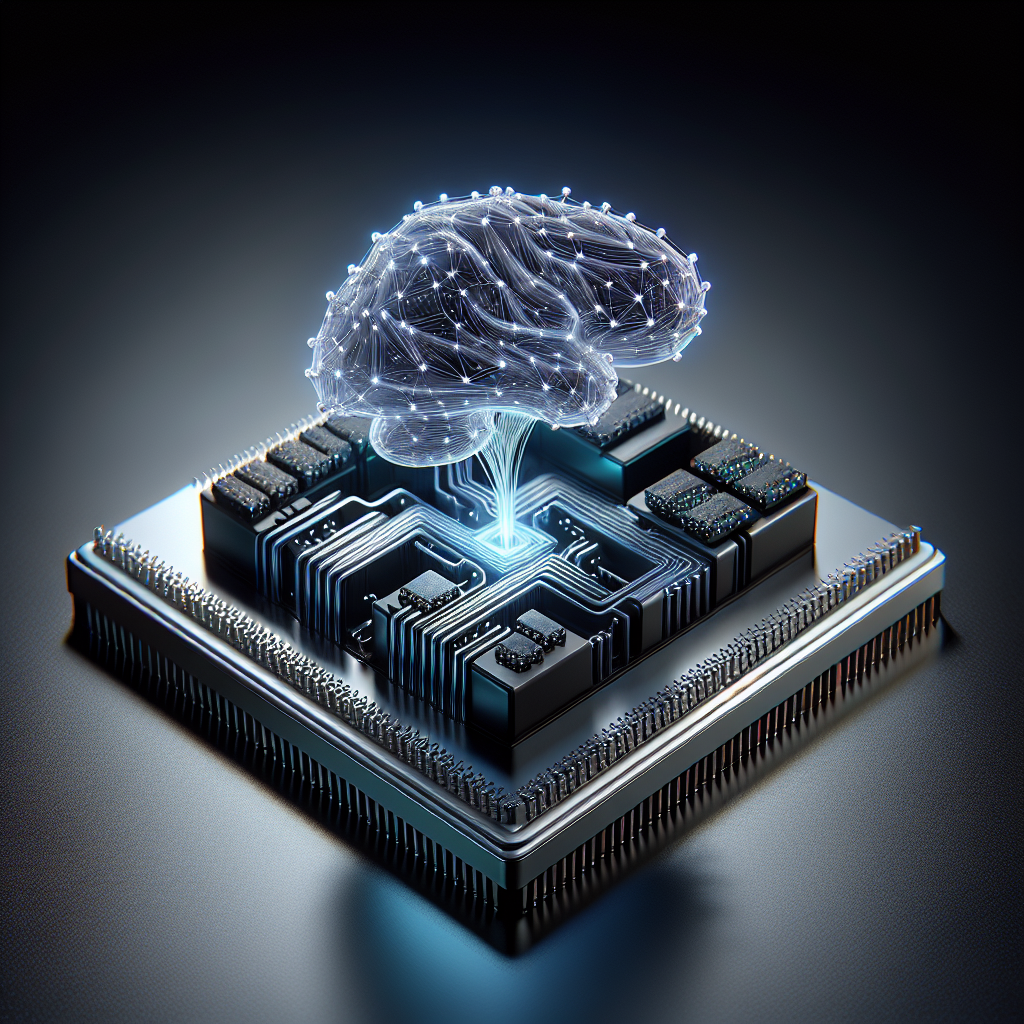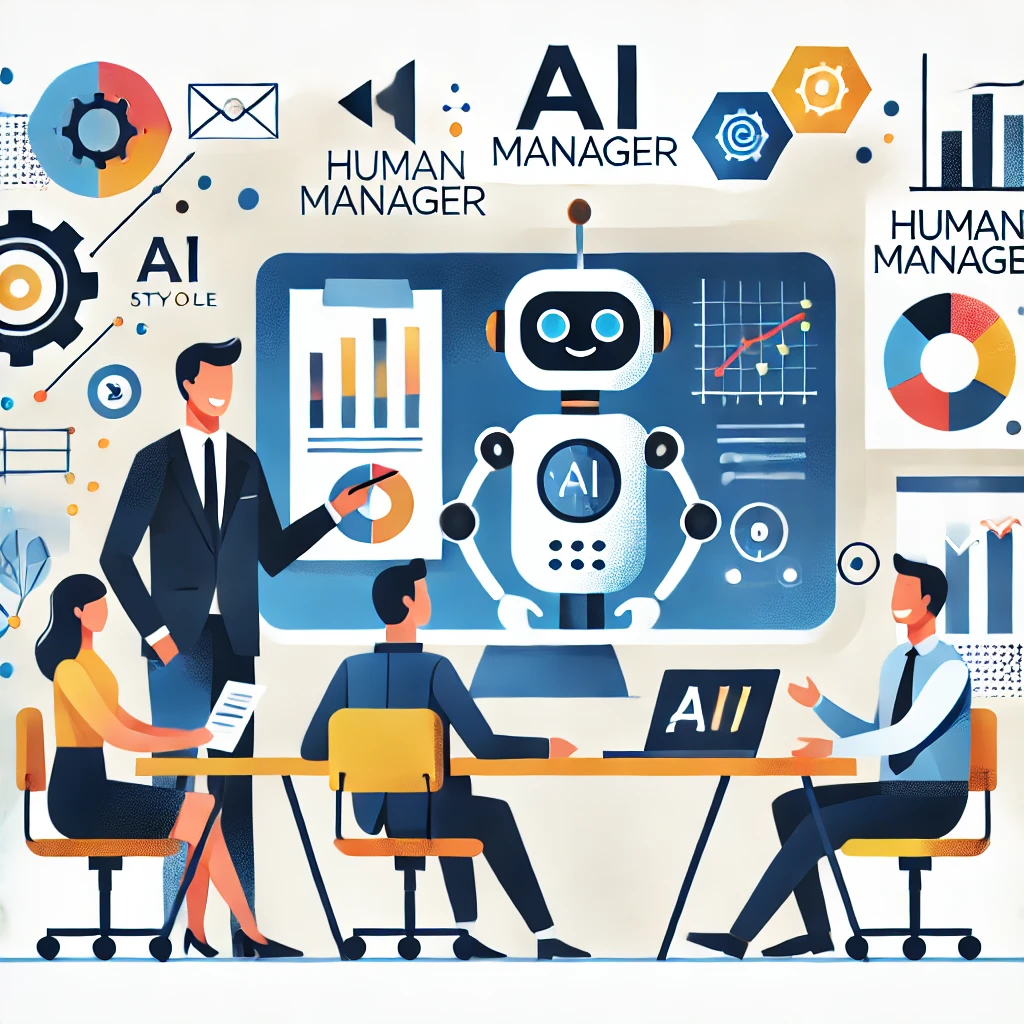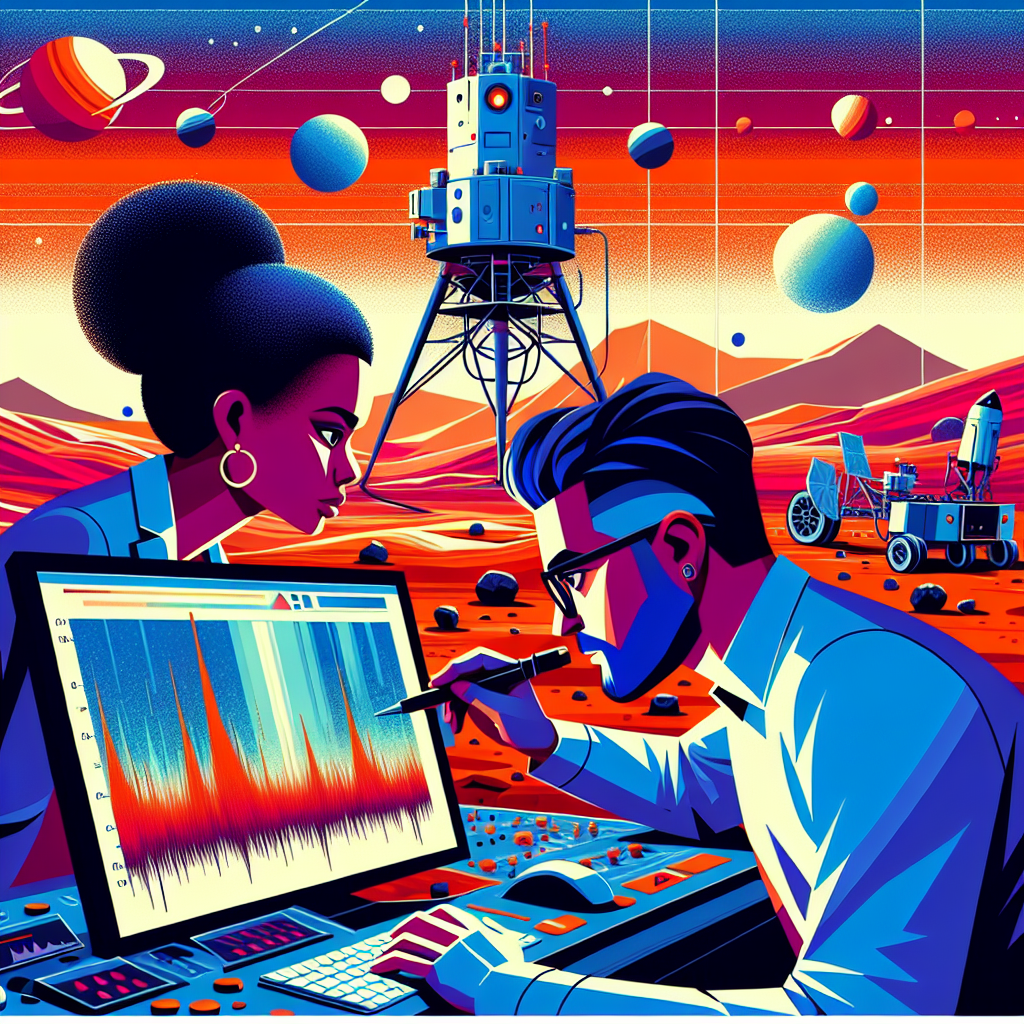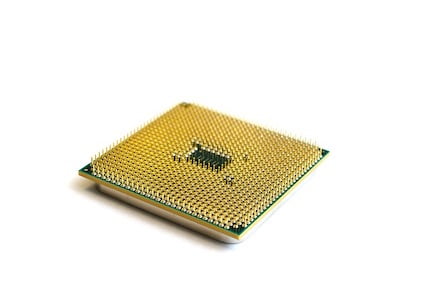The demand for electricity in modern computing is increasing rapidly, with projections showing that by 2026, energy consumption by data centers, artificial intelligence (AI), and cryptocurrency could double compared to 2022 levels. To address this issue, some companies are exploring the development of computers with a different architecture that is more energy efficient. One approach is neuromorphic computing, where electronic devices imitate the structure and function of neurons and synapses in the brain. While this technology has been in development since the 1980s, the energy requirements of AI are pushing for its real-world implementation.
Neuromorphic computing offers potential gains in energy efficiency and performance. Unlike conventional computers, neuromorphic computers do not have separate memory and processing units, reducing energy consumption and processing time. Additionally, these computers can adopt an event-driven approach, where activation only occurs when there is something to process, saving power. While some neuromorphic efforts are digital, there is also the possibility of using analogue computing, which relies on continuous signals and can be useful for analyzing data from the outside world.
Commercial applications of neuromorphic computing fall into two main categories. The first is providing a more energy efficient and high-performance platform for AI applications such as image and video analysis, speech recognition, and chatbots. The second is in “edge computing” applications, where data is processed in real-time on connected devices with power constraints, benefiting autonomous vehicles, robots, cell phones, and wearable technology.
However, there are still challenges to overcome. Developing the software needed for neuromorphic chips to run is a major hurdle. Additionally, the cost of creating new chips, whether using silicon or other materials, is expensive. Despite these challenges, companies like Intel and IBM are making progress in developing neuromorphic chips and systems. It is predicted that it will take at least a decade, if not two, before the full benefits of neuromorphic computing are realized.
In conclusion, neuromorphic computing offers the potential for more energy efficient and high-performance computing. While there are technical and cost challenges to overcome, companies are making strides in developing this technology. In the future, different types of computing platforms, including conventional, neuromorphic, and quantum computing, are expected to work together to meet the diverse needs of advanced technology applications.
Original news source: Could brain-like computers be a ‘competition killer’? (BBC)
🎧 Listen:
Slow
Normal
Fast
📖 Vocabulary:
| 1 | projections | Estimates or forecasts of future trends or outcomes |
| 2 | architecture | The design and structure of a system or device |
| 3 | neuromorphic | Mimicking the structure and function of the human brain |
| 4 | synapses | Junctions between neurons that allow them to communicate |
| 5 | implementation | The process of putting a plan or system into operation |
| 6 | conventional | Traditional or established methods |
| 7 | analogue | Using continuous signals rather than discrete ones |
| 8 | constraints | Limitations or restrictions |
| 9 | autonomous | Capable of operating independently without human intervention |
| 10 | wearable | Technology that can be worn on the body |
| 11 | hurdle | An obstacle or difficulty that must be overcome |
| 12 | silicon | A chemical element used in making electronic circuits |
| 13 | strides | Significant progress or advancements |
| 14 | quantum | A type of computing that uses principles of quantum mechanics |
| 15 | diverse | Showing a great deal of variety or differences |
Group or Classroom Activities
Warm-up Activities:
– News Summary
Instructions: Ask students to read the article and write a summary of the main points in their own words. They should aim to capture the key ideas and information from the article in a concise manner. Afterward, have students share their summaries with a partner or in small groups and discuss any similarities or differences they noticed.
– Vocabulary Pictionary
Instructions: Select a list of vocabulary words from the article and write them on separate small pieces of paper. Divide the class into teams and have each team take turns selecting a word. One student from the team must then draw a picture representing the word while their teammates try to guess what it is. The team with the most correct guesses wins.
– Opinion Poll
Instructions: Divide the class into pairs or small groups. Each group should discuss their opinions on neuromorphic computing and its potential benefits and challenges. Afterward, have each group present their opinions to the class and facilitate a class discussion, allowing students to share their thoughts and opinions on the topic.
– Pros and Cons
Instructions: Divide the class into two groups: one group represents the pros of neuromorphic computing and the other represents the cons. Each group should brainstorm and prepare arguments to support their side. Once prepared, have a debate where each group presents their arguments and counters the arguments of the other group. Encourage students to use evidence from the article or their own knowledge to support their arguments.
– Future Predictions
Instructions: Have students work individually or in pairs to make predictions about the future of neuromorphic computing. They should consider the potential advancements, challenges, and impacts that this technology could have. Afterward, have students share their predictions with the class and engage in a discussion about the different possibilities. Encourage students to support their predictions with evidence or reasoning.
🤔 Comprehension Questions:
1. What is the projected increase in energy consumption by data centers, AI, and cryptocurrency by 2026?
2. How do neuromorphic computers differ from conventional computers in terms of architecture?
3. What is the benefit of an event-driven approach in neuromorphic computing?
4. What are the two main categories of commercial applications for neuromorphic computing?
5. What are the challenges in developing software for neuromorphic chips?
6. What are some companies that are making progress in developing neuromorphic chips and systems?
7. How long is it predicted to take before the full benefits of neuromorphic computing are realized?
8. What types of computing platforms are expected to work together in the future to meet advanced technology needs?
Go to answers ⇩
🎧✍️ Listen and Fill in the Gaps:
The demand for electricity in modern computing is increasing rapidly, with projections showing that by 2026, energy consumption by data centers, artificial intelligence (AI), and cryptocurrency could double compared to 2022 levels. To address this issue, some companies are exploring the development of computers with a different architecture that is more energy (1)______. One approach is neuromorphic computing, where electronic (2)______ imitate the structure and function of neurons and synapses in the (3)______. While this (4)______ has been in development since the 1980s, the energy requirements of AI are pushing for its real-world implementation.
Neuromorphic computing offers potential gains in energy efficiency and performance. Unlike conventional computers, neuromorphic computers do not have separate memory and (5)______ (6)______, reducing energy (7)______ and processing time. Additionally, these computers can (8)______ an event-driven approach, where activation only occurs when there is something to process, saving power. While some neuromorphic efforts are digital, there is also the possibility of using analogue computing, which relies on continuous signals and can be useful for analyzing data from the outside world.
Commercial applications of neuromorphic computing fall into two main categories. The first is providing a more energy efficient and high-performance platform for AI applications such as image and video analysis, speech recognition, and chatbots. The (9)______ is in “edge computing” applications, where data is processed in real-time on (10)______ devices with power constraints, benefiting autonomous vehicles, robots, cell phones, and wearable technology.
However, there are still challenges to overcome. Developing the software needed for (11)______ chips to run is a major hurdle. Additionally, the cost of creating new chips, whether using (12)______ or other materials, is expensive. Despite these challenges, companies like Intel and IBM are making progress in developing neuromorphic chips and systems. It is predicted that it will take at least a decade, if not two, before the full benefits of neuromorphic computing are realized.
In conclusion, neuromorphic computing offers the potential for more (13)______ efficient and high-performance computing. While there are technical and cost challenges to overcome, (14)______ are making strides in developing this technology. In the future, different (15)______ of computing platforms, including conventional, neuromorphic, and quantum computing, are expected to work together to meet the (16)______ needs of advanced technology applications.
Go to answers ⇩
💬 Discussion Questions:
Students can ask a partner these questions, or discuss them as a group.
1. What is neuromorphic computing and how does it differ from conventional computing?
2. How do you feel about the increasing demand for electricity in modern computing? Why?
3. Do you think the development of computers with a different architecture is necessary to address the energy consumption issue? Why or why not?
4. How would you feel if computers in the future were able to imitate the structure and function of neurons and synapses in the brain? Why?
5. Do you think the potential gains in energy efficiency and performance offered by neuromorphic computing are worth the challenges it presents? Why or why not?
6. What are some potential commercial applications of neuromorphic computing that you find interesting? Why?
7. How do you think neuromorphic computing could benefit autonomous vehicles, robots, cell phones, and wearable technology? Why?
8. What are some potential drawbacks or limitations of neuromorphic computing that you can think of? Why?
9. Do you think the development of the software needed for neuromorphic chips to run is a major hurdle? Why or why not?
10. How do you think the cost of creating new chips for neuromorphic computing compares to the benefits it offers? Why?
11. How do you feel about the prediction that it will take at least a decade, if not two, before the full benefits of neuromorphic computing are realized? Why?
12. What are your thoughts on the idea of different types of computing platforms, including conventional, neuromorphic, and quantum computing, working together in the future? Why?
13. How do you think the development of neuromorphic computing could impact society as a whole? Why?
14. Do you think the potential energy savings from neuromorphic computing are worth the investment in research and development? Why or why not?
15. How would you feel if neuromorphic computing became the dominant form of computing in the future? Why?
Individual Activities
📖💭 Vocabulary Meanings:
Match each word to its meaning.
Words:
1. projections
2. architecture
3. neuromorphic
4. synapses
5. implementation
6. conventional
7. analogue
8. constraints
9. autonomous
10. wearable
11. hurdle
12. silicon
13. strides
14. quantum
15. diverse
Meanings:
(A) Significant progress or advancements
(B) The process of putting a plan or system into operation
(C) Showing a great deal of variety or differences
(D) Capable of operating independently without human intervention
(E) The design and structure of a system or device
(F) Using continuous signals rather than discrete ones
(G) An obstacle or difficulty that must be overcome
(H) A chemical element used in making electronic circuits
(I) A type of computing that uses principles of quantum mechanics
(J) Junctions between neurons that allow them to communicate
(K) Technology that can be worn on the body
(L) Estimates or forecasts of future trends or outcomes
(M) Traditional or established methods
(N) Mimicking the structure and function of the human brain
(O) Limitations or restrictions
Go to answers ⇩
🔡 Multiple Choice Questions:
1. What is one reason why companies are exploring the development of computers with a different architecture?
(a) They want to reduce the processing time of computers.
(b) They want to create computers that imitate the structure and function of neurons and synapses in the brain.
(c) The demand for electricity in modern computing is increasing rapidly.
(d) They want to analyze data from the outside world more efficiently.
2. How do neuromorphic computers differ from conventional computers?
(a) Neuromorphic computers have a higher energy consumption than conventional computers.
(b) Neuromorphic computers can only process continuous signals.
(c) Neuromorphic computers have a slower processing time than conventional computers.
(d) Neuromorphic computers do not have separate memory and processing units.
3. What are the two main categories of commercial applications for neuromorphic computing?
(a) Image and video analysis and speech recognition
(b) Autonomous vehicles and robots
(c) Cell phones and wearable technology
(d) AI applications and edge computing applications
4. What is one challenge to overcome in the development of neuromorphic computing?
(a) Developing the software needed for neuromorphic chips to run
(b) The high cost of creating new chips
(c) The lack of demand for energy efficient computing
(d) The lack of progress made by companies like Intel and IBM
5. What is one potential benefit of neuromorphic computing?
(a) Faster processing time
(b) More energy efficient computing
(c) Lower cost of creating new chips
(d) Improved demand for energy efficient computing
6. What is one potential application of neuromorphic computing?
(a) Image and video analysis
(b) Quantum computing
(c) Analyzing data from the outside world
(d) Creating conventional computers
7. How long is it predicted to take before the full benefits of neuromorphic computing are realized?
(a) Within the next year
(b) At least a decade, if not two
(c) Within the next five years
(d) It is not possible to predict
8. What is one approach to neuromorphic computing?
(a) Using separate memory and processing units
(b) Adopting a continuous signals approach
(c) Imitating the structure and function of neurons and synapses in the brain
(d) Focusing on the development of quantum computing
Go to answers ⇩
🕵️ True or False Questions:
1. Neuromorphic computers do not have separate memory and processing units, reducing energy consumption.
2. The demand for electricity in modern computing is projected to remain the same by 2026 compared to 2022 levels.
3. There are both digital and analog approaches to neuromorphic computing.
4. Neuromorphic computers cannot adopt an event-driven approach, saving power by activating only when there is something to process.
5. Some companies are exploring the development of more energy efficient computers with a different architecture.
6. Commercial applications of neuromorphic computing exclude AI applications and edge computing.
7. Developing the software and creating new chips for neuromorphic computing are major challenges that need to be overcome.
8. Neuromorphic computing does not imitate the structure and function of neurons and synapses in the brain.
Go to answers ⇩
📝 Write a Summary:
Write a summary of this news article in two sentences.
Check your writing now with the best free AI for English writing!
Writing Questions:
Answer the following questions. Write as much as you can for each answer.
Check your answers with our free English writing assistant!
1. What is neuromorphic computing and how does it differ from conventional computing?
2. What are the potential benefits of neuromorphic computing in terms of energy efficiency and performance?
3. What are the two main categories of commercial applications for neuromorphic computing?
4. What are some of the challenges that need to be overcome in the development of neuromorphic computing?
5. How long is it predicted to take before the full benefits of neuromorphic computing are realized?
✅ Answers
🤔✅ Comprehension Question Answers:
1. The projected increase in energy consumption by data centers, AI, and cryptocurrency by 2026 is double compared to 2022 levels.
2. Neuromorphic computers do not have separate memory and processing units, reducing energy consumption and processing time.
3. The benefit of an event-driven approach in neuromorphic computing is that activation only occurs when there is something to process, saving power.
4. The two main categories of commercial applications for neuromorphic computing are providing a more energy efficient and high-performance platform for AI applications, and “edge computing” applications where data is processed in real-time on connected devices with power constraints.
5. The challenges in developing software for neuromorphic chips include the need to develop specific software to run on these chips.
6. Some companies that are making progress in developing neuromorphic chips and systems are Intel and IBM.
7. It is predicted that it will take at least a decade, if not two, before the full benefits of neuromorphic computing are realized.
8. Different types of computing platforms, including conventional, neuromorphic, and quantum computing, are expected to work together in the future to meet advanced technology needs.
Go back to questions ⇧
🎧✍️✅ Listen and Fill in the Gaps Answers:
(1) efficient
(2) devices
(3) brain
(4) technology
(5) processing
(6) units
(7) consumption
(8) adopt
(9) second
(10) connected
(11) neuromorphic
(12) silicon
(13) energy
(14) companies
(15) types
(16) diverse
Go back to questions ⇧
📖💭✅ Vocabulary Meanings Answers:
1. projections
Answer: (L) Estimates or forecasts of future trends or outcomes
2. architecture
Answer: (E) The design and structure of a system or device
3. neuromorphic
Answer: (N) Mimicking the structure and function of the human brain
4. synapses
Answer: (J) Junctions between neurons that allow them to communicate
5. implementation
Answer: (B) The process of putting a plan or system into operation
6. conventional
Answer: (M) Traditional or established methods
7. analogue
Answer: (F) Using continuous signals rather than discrete ones
8. constraints
Answer: (O) Limitations or restrictions
9. autonomous
Answer: (D) Capable of operating independently without human intervention
10. wearable
Answer: (K) Technology that can be worn on the body
11. hurdle
Answer: (G) An obstacle or difficulty that must be overcome
12. silicon
Answer: (H) A chemical element used in making electronic circuits
13. strides
Answer: (A) Significant progress or advancements
14. quantum
Answer: (I) A type of computing that uses principles of quantum mechanics
15. diverse
Answer: (C) Showing a great deal of variety or differences
Go back to questions ⇧
🔡✅ Multiple Choice Answers:
1. What is one reason why companies are exploring the development of computers with a different architecture?
Answer: (c) The demand for electricity in modern computing is increasing rapidly.
2. How do neuromorphic computers differ from conventional computers?
Answer: (d) Neuromorphic computers do not have separate memory and processing units.
3. What are the two main categories of commercial applications for neuromorphic computing?
Answer: (d) AI applications and edge computing applications
4. What is one challenge to overcome in the development of neuromorphic computing?
Answer: (a) Developing the software needed for neuromorphic chips to run
5. What is one potential benefit of neuromorphic computing?
Answer: (b) More energy efficient computing
6. What is one potential application of neuromorphic computing?
Answer: (a) Image and video analysis
7. How long is it predicted to take before the full benefits of neuromorphic computing are realized?
Answer: (b) At least a decade, if not two
8. What is one approach to neuromorphic computing?
Answer: (c) Imitating the structure and function of neurons and synapses in the brain
Go back to questions ⇧
🕵️✅ True or False Answers:
1. Neuromorphic computers do not have separate memory and processing units, reducing energy consumption. (Answer: True)
2. The demand for electricity in modern computing is projected to remain the same by 2026 compared to 2022 levels. (Answer: False)
3. There are both digital and analog approaches to neuromorphic computing. (Answer: True)
4. Neuromorphic computers cannot adopt an event-driven approach, saving power by activating only when there is something to process. (Answer: False)
5. Some companies are exploring the development of more energy efficient computers with a different architecture. (Answer: True)
6. Commercial applications of neuromorphic computing exclude AI applications and edge computing. (Answer: False)
7. Developing the software and creating new chips for neuromorphic computing are major challenges that need to be overcome. (Answer: True)
8. Neuromorphic computing does not imitate the structure and function of neurons and synapses in the brain. (Answer: False)
Go back to questions ⇧













